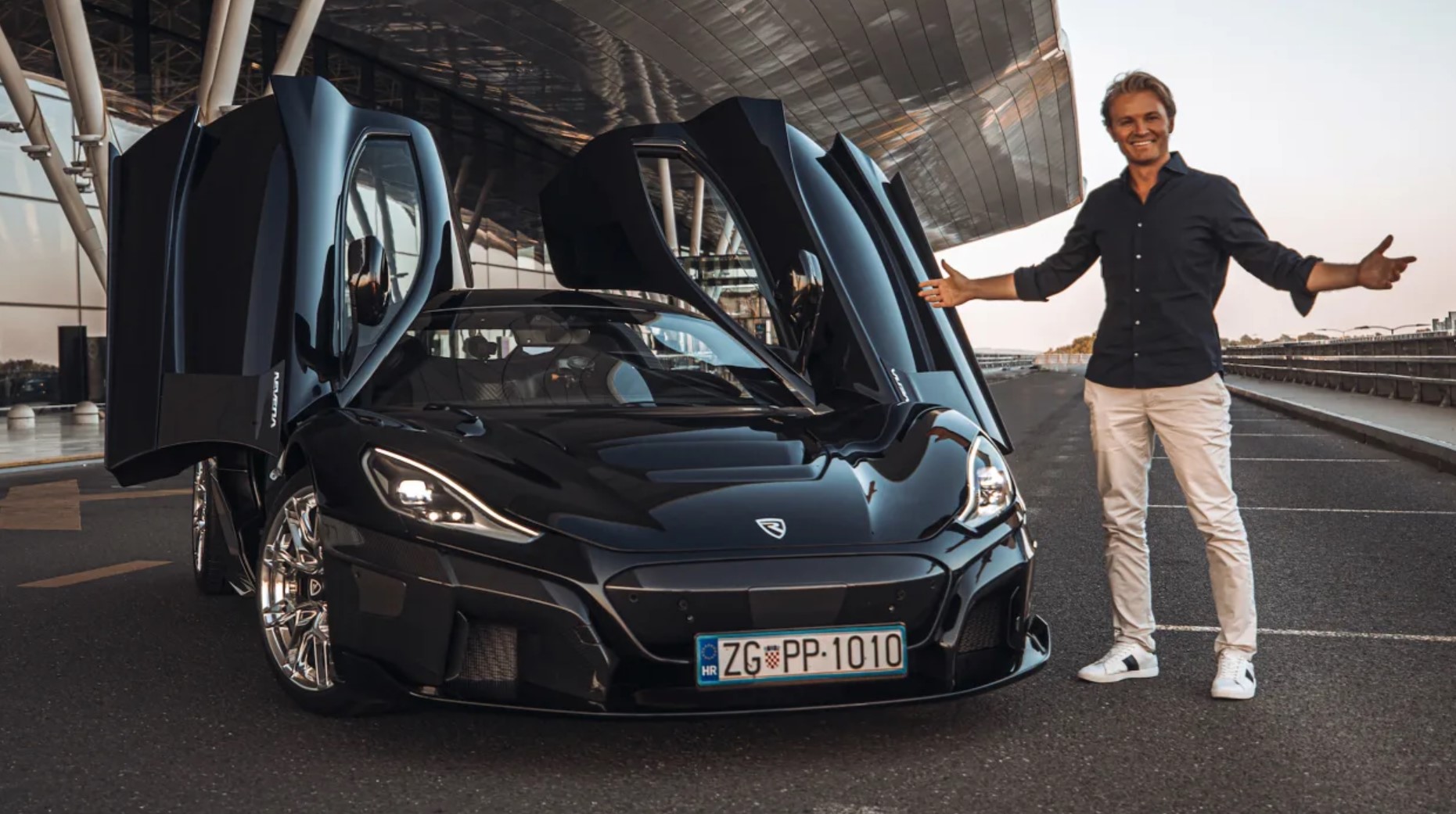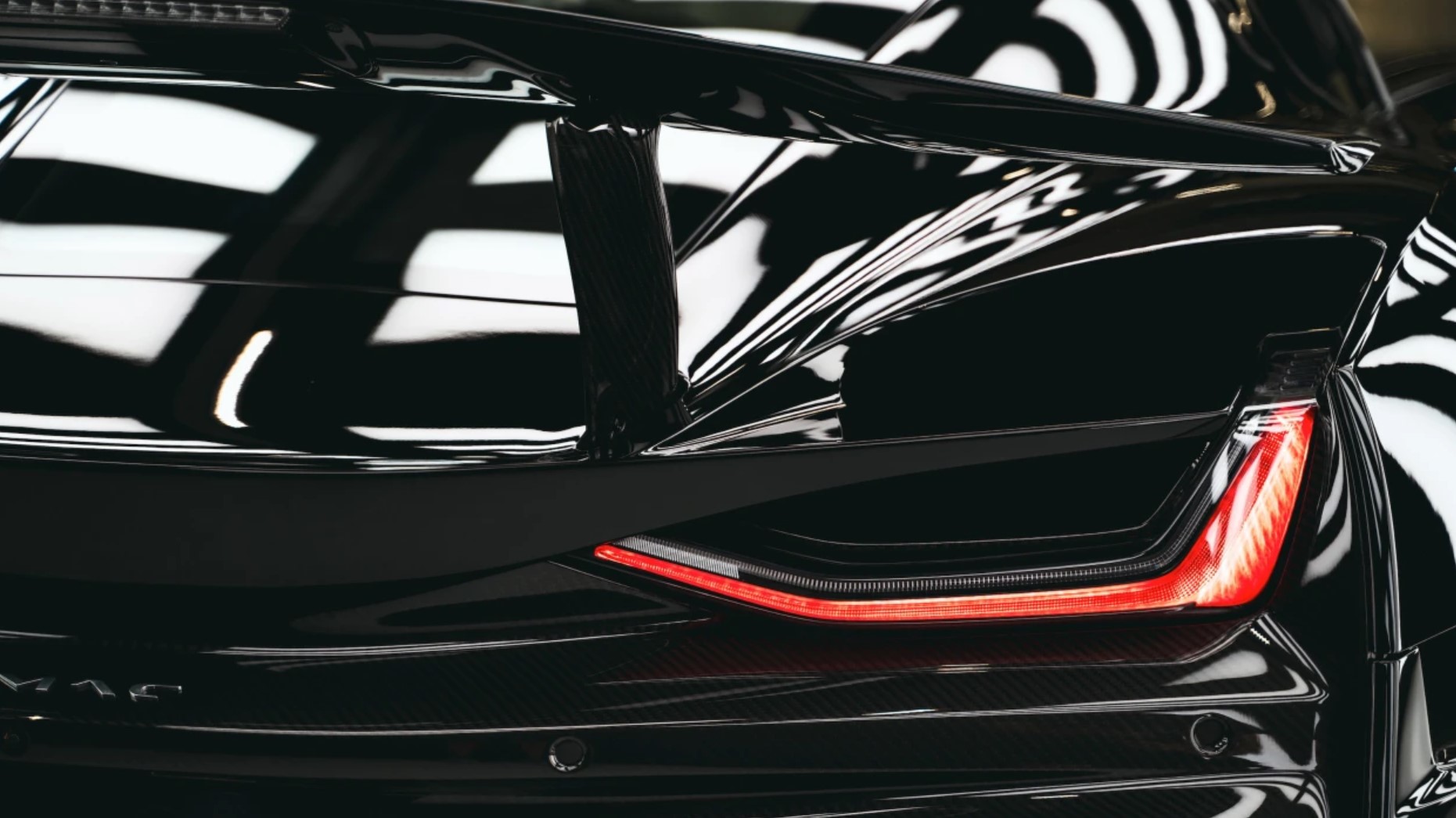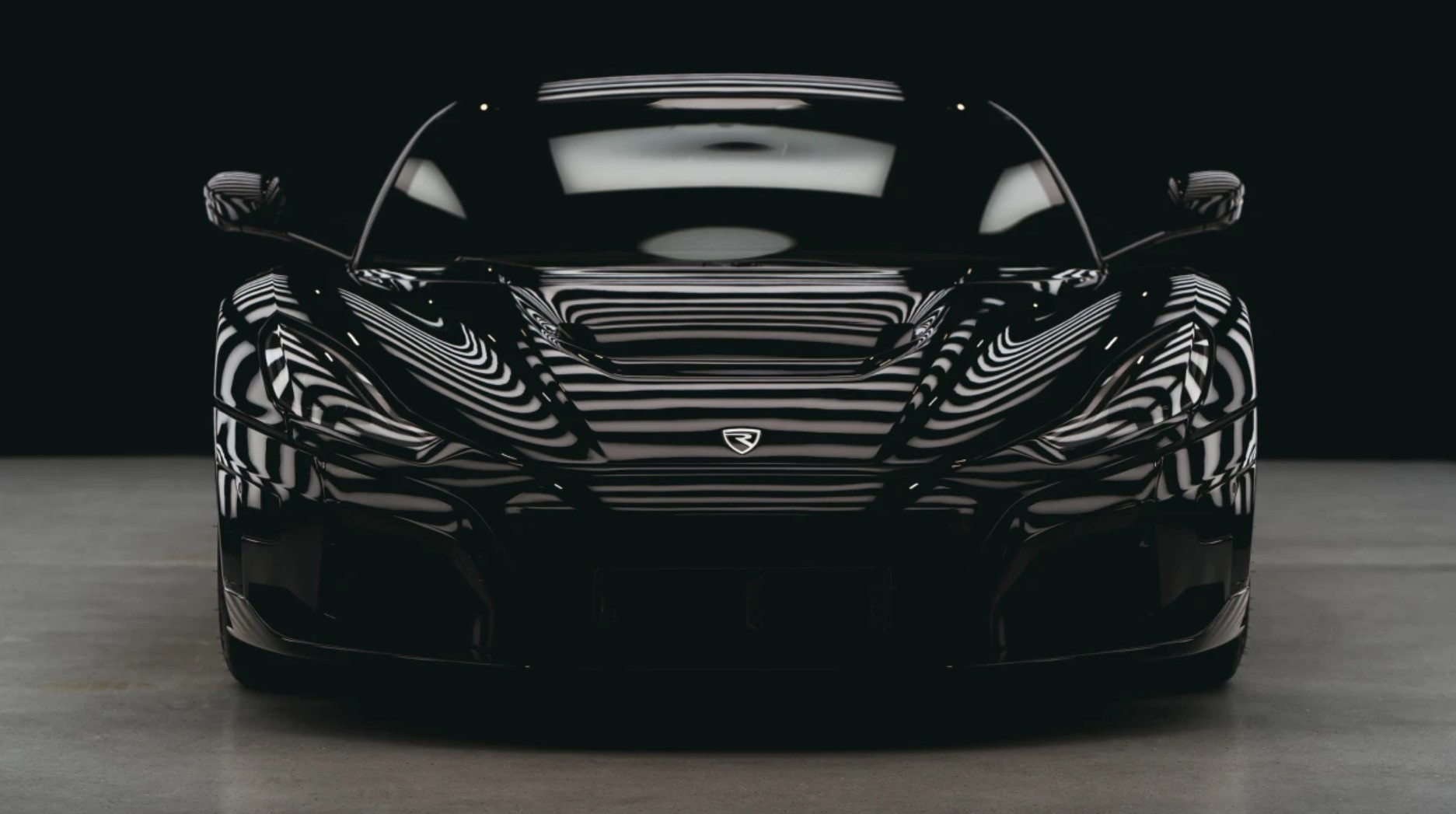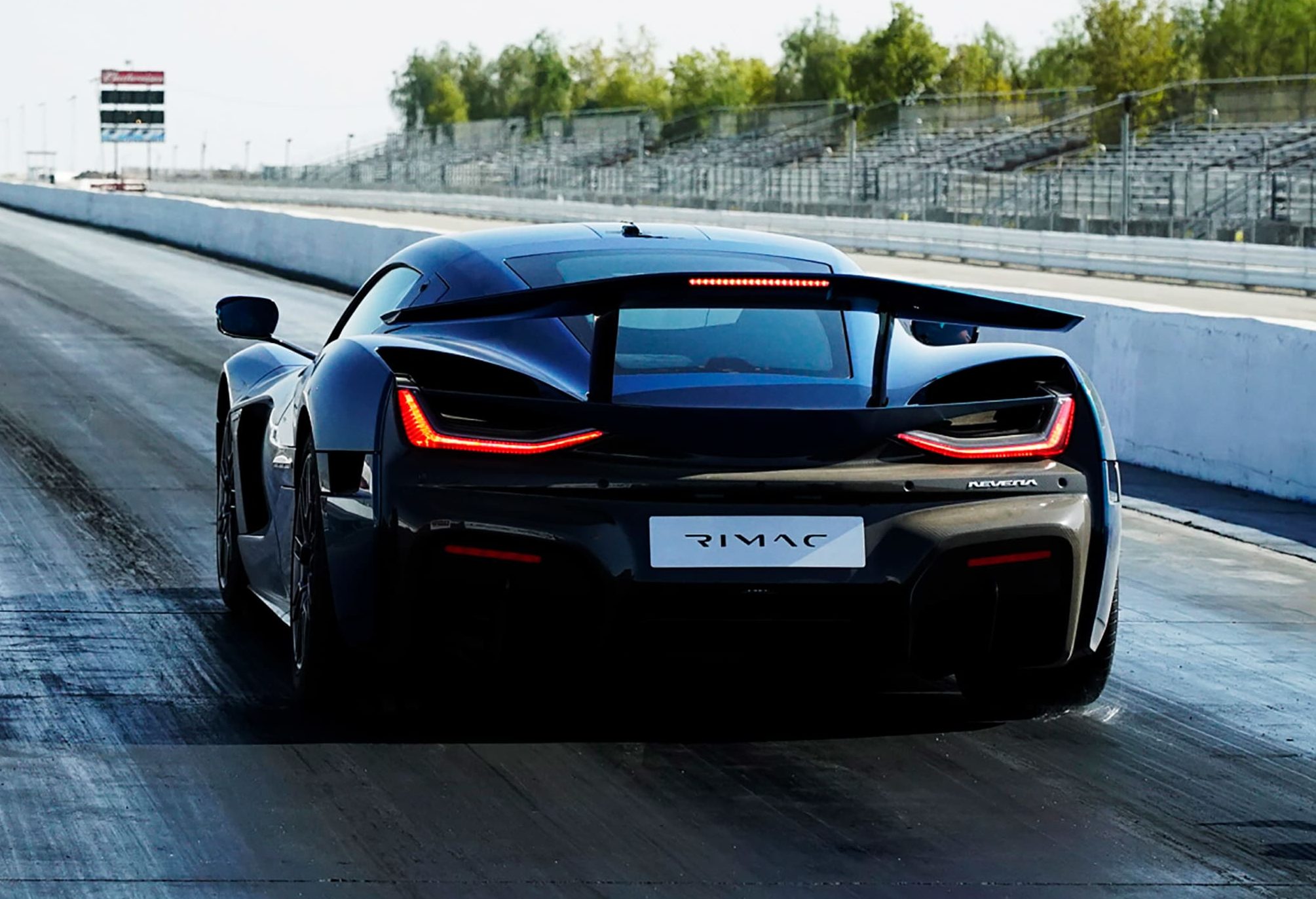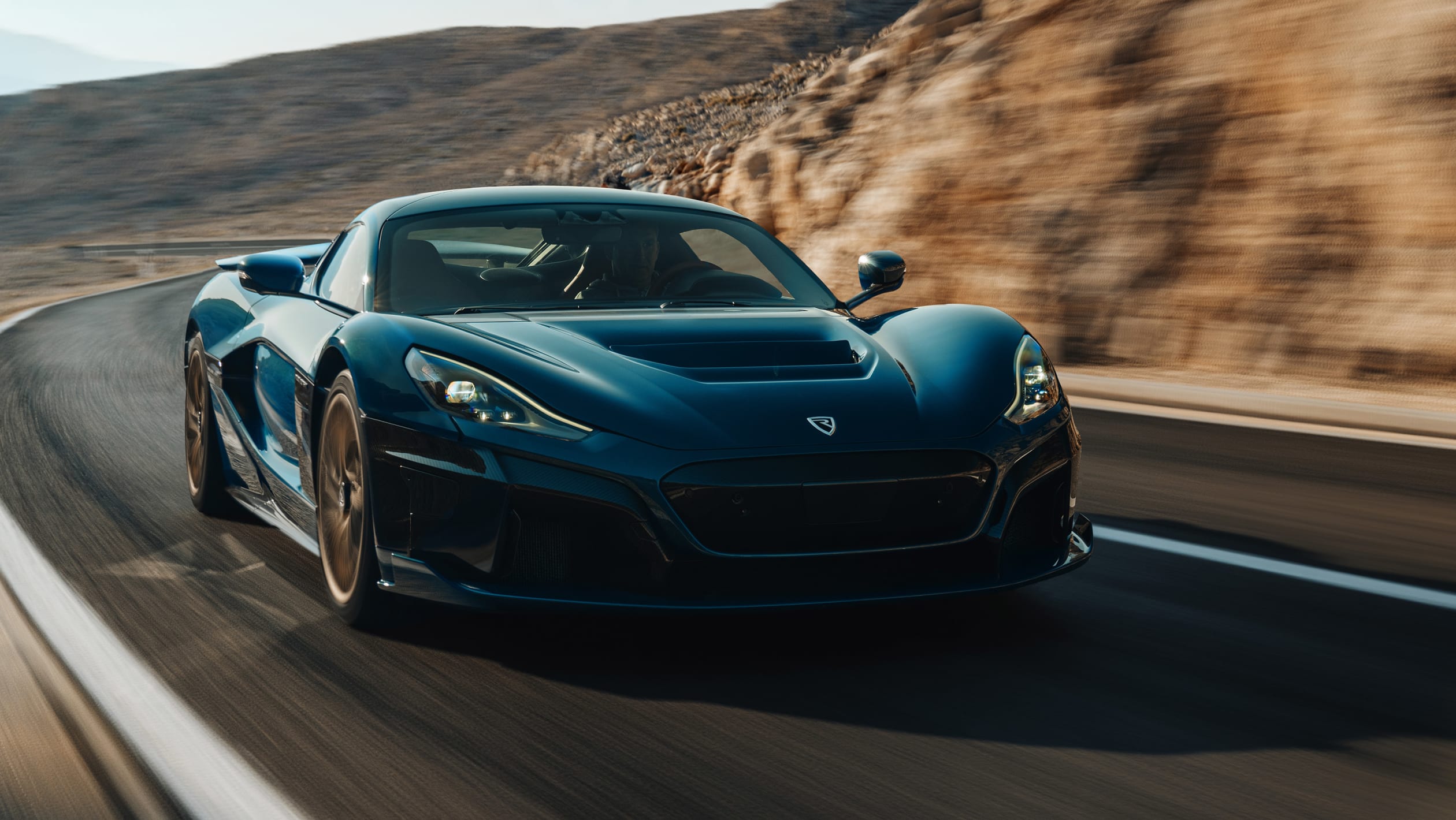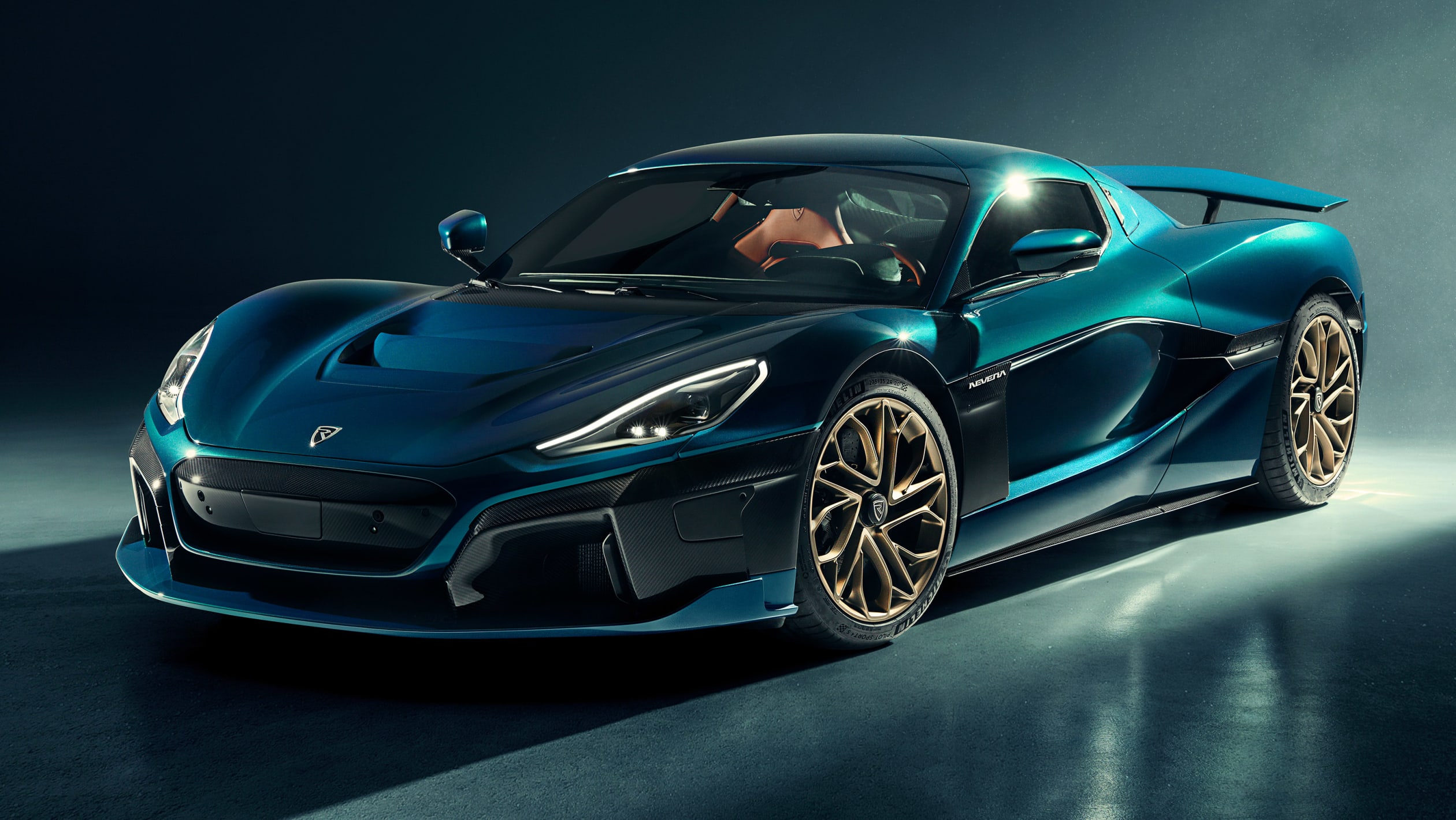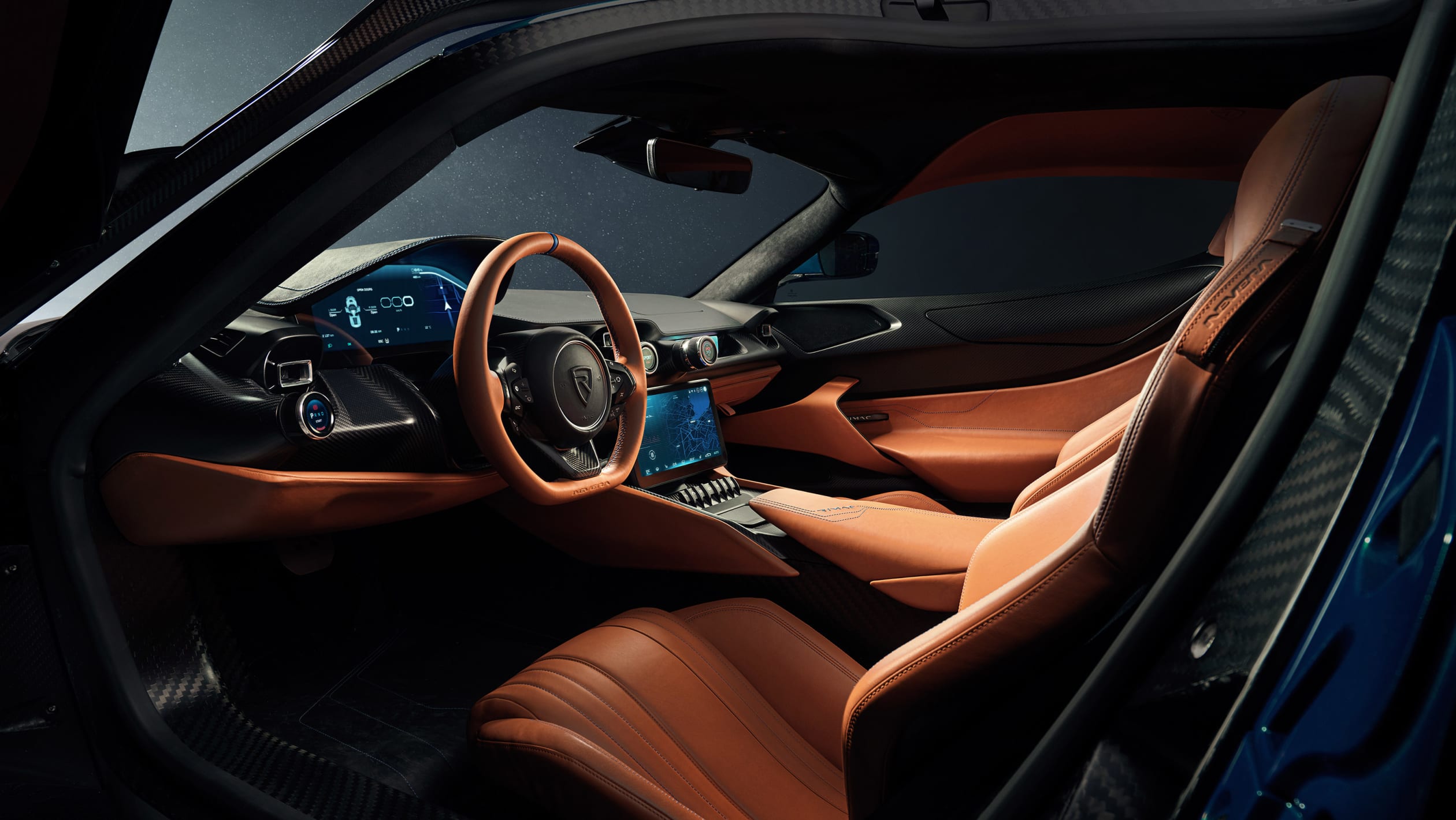The Rimac Nevera hypercar is now in production, with the first unit going to F1 World Champion Nico Rosberg.
Just a month after the first production-spec Nevera rolled off Rimac’s new production line in Zagreb, Croatia, the first customer car has now been collected by its owner, 2016 Formula One World Champion Nico Rosberg.
A contrast to the Callisto Green car revealed earlier this year, Rosberg opted for a more stealthy spec for car number 001. Stellar Black paint, black brake calipers and a matching black leather and Alcantara interior provide an understated look, with polished wheels adding some flare – inside, a unique plate denotes its build number alongside Nico Rosberg’s signature.
Following its collection, Rosberg said: “Ever since I first met Mate and truly understood the genius behind Nevera, I knew I wanted car number one. For me, this car represents absolutely everything I could ever want. It showcases the very best of innovative electrification technology, bringing it into a car designed literally from the ground-up to be not just incredibly fast – or the fastest – but really great to drive, too. I can’t wait to see what it can do.”
In the build up to cars reaching customers, Rimac took to the drag strip to give us our first real glimpse of the Nevera’s impressive performance. Unofficially, the Nevera already achieved record-breaking quarter-mile runs in June, but with official timing equipment fitted at California’s Famoso Raceway, the Nevera has recorded an 8.582sec pass at an astonishing 167.51mph (269.58kph) – this officially makes it the world’s quickest production car. For perspective, the McLaren P1 covers the sprint in 9.8sec at 148.9mph (239.6kph), with the Chiron Sport knocking it back to 9.4sec at 158mph (254.3kph).
Piloted by Brooks Weiselblat of DragTimes, the car was fitted with standard Michelin Pilot Sport 4S tyres and had never previously seen a ‘prepped’ drag racing surface. Rimac test and development driver Miroslav Zrnčević, said: ‘This was our first test on a VHT (glued) surface, so we did not know what to expect. At first we were hitting less than expected ¼ mile times (8.7 and 8.8 seconds) than we did on a normal, non-prepped surface in Europe.’ He went on to say: ‘After some adjustments and different tire warm-up strategies we managed to get better results. Brooks helped with his experience of staging the car and we managed to set the world record for the fastest accelerating production car and also beat our own 1/4 mile record.’
The Nevera itself is based on the Concept_Two first unveiled in 2018, but now Rimac has taken that car’s bespoke chassis, motors and batteries and turned them into something tangible that customers can actually purchase. The numbers are predictably immense, including the price, which is around $3 million, plus taxes.
Peak power is rated at a cool 1388kW and torque at 2360Nm, generated from four individual ‘Permanent Magnet’ motors in modules that sit on each axle. The two axles are driven from individual single-speed transmissions, but power is still fully variable left-to-right. The motors draw power from a 120kWh (gross) lithium-ion battery pack that sits in a T-shaped module between and behind the two seats. Range is predicted to be around the 550km mark, and no indication of weight has been revealed.
The Nevera’s construction is derived from a central carbonfibre monocoque tub, with aluminium subframes bolted at each end to which the axles are mounted. The battery pack also forms a structural part of the carbon tub itself, adding 37 per cent extra stiffness to the torsional rigidity rating. Suspension is of a double wishbone design at all four corners, with adaptive dampers and an adjustable ride height giving the Nevera increased adjustability within the driver mode systems.
Like most EVs, braking is dealt with by two systems, with Rimac’s 300kW regeneration capability being the most powerful of any production EV, backed up by a 390mm set of carbon-ceramics discs and six-piston calipers from Brembo. The braking system is entirely by-wire, with a feedback motor built in to the hardware designed to merge brake feel from the two systems into one linear response. The steering is also completely by-wire, but it remains to be seen if Rimac does a better job of it than Infiniti did with the odd-feeling Q60 Coupe.
The Nevera’s type of total torque vectoring has also given engineers the chance to rethink traditional traction control and stability programs, essentially replacing those systems (which cut power and utilise friction brakes) with a predictive and reactive traction management system using the electric motors entirely independently of one another. The new system is called ‘Rimac All Wheel Torque Vectoring 2’ (R-AWTV 2) and specifically calibrates the amount of torque being sent to each wheel according to conditions, driver inputs and the selected driver mode, to get the most from each of the four motors and keep the car stable whilst doing so.
While the exterior design does look similar to that of the concept, Rimac has completed a large amount of aero refinement to clean up the shape, while also improving downforce values that are augmented by its active aerodynamic components. These include a moveable grille insert, flaps under the splitter and in the rear diffuser, plus a moveable rear wing. All these operate independently depending on the selected driver mode. Total downforce variation between its highest and lowest settings is a substantial 326 per cent.
Rimac Nevera front40
Inside, the cabin is typically heavy on digital interfaces, with three displays incorporated into an otherwise restrained yet infinitely customisable interior. In fact, Rimac is adamant that no two Neveras will leave the factory the same, offering three starting specifications as well as a completely bespoke palette of colours.
While all of the car’s on-paper numbers sound exciting, the real thrill with the Rimac Nevera is that it is a far more tangible electric hypercar than just about any other in development right now. That enthusiasm has spread to the traditional OEMs too, with confidence in Rimac’s technology so strong that Porsche recently purchased a ten per cent share in the company.
As a final note, the name ‘Nevera’ comes from a word for a storm surge that can hit the Croatian coast from the Adriatic Sea – with Italy just on the other side. While Rimac still has a way to go before it becomes a household name alongside more traditional supercar royalty, there’s certainly some level of irony considering the storm this modern supercar maker is about to stir up.
Automotive Daily




